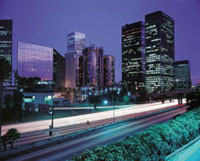Epson Perfection 636 Scanner
Less than a year ago I tested
and wrote a report on Epson's Perfection 600 scanner. Before the
report was set in type Epson sold out of every Perfection 600 scanner
in stock, and the report was canceled. Let's hope Epson has produced
enough of this new Perfection 636 scanner so you get to read this report.
And, you should, because for anyone who has been a photographer for
a while and wants to try "the digital darkroom" the Epson
Perfection 636 scanner is an ideal entrée. You get for just under
$400, a basic scanner for $299 and $99 for the film scanning accessory.
Most significant, you don't have to compromise your expectations
of picture quality as part of this bargain. |
|||
Using The Epson Perfection
636 Scanner. Everything from unpacking to setting up and loading
the software is quite simple and straightforward. This new Perfection
636 was ready to do its first scan in just a matter of minutes. The physical
design is compact and very clean. The TPU to scan film is quite simple
and ingenious making it easy to use, and it can be stowed away when not
in use quite readily. Epson provides their own TWAIN driver as well as
the LaserSoft scanner driver, with the former intended primarily for scanning
text documents and to use TextBridge, Presto! PageManager, and the Broderbund
applications. LaserSoft is intended for photographic and similar scanning
of art and images using PhotoDeluxe or other similar applications a user
may have. Coincidentally, I had a typed letter I needed to scan and used
Textbridge to do OCR so I could put the information into my word processor.
This use of the scanner was exceedingly easy, not even requiring a reference
to the documentation, though I'd not used the Xerox software before. Technical Specifications |
- Log in or register to post comments



































